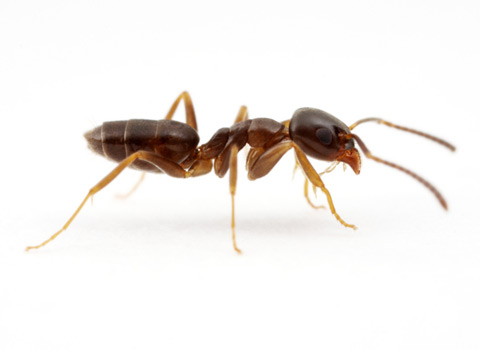Steps to make your Nassau County, Long Island residence an ant-free home
Prevention tips to get rid of ants - Ant Exterminator Long Island, NY
If you have never encountered ants in your Long Island home or place of business, count yourself among the fortunate few. However, if you are like most Nassau County, Long Island homeowners, you have fought your fair share of battles against this troublesome pest – whether it is a colony of carpenter ants nesting in a wall or a procession of house ants walking across your kitchen counter.
In the United States, ants are the number one nuisance pest. With more than seven hundred species of ants occurring in the country and more than twenty types known to infest homes and other structures, it is not surprising that so many people report having issues with ants. However, there are some simple steps that Nassau County, Long Island homeowners can take to reduce the chances of accidentally inviting ants into their homes.
1. Ant hangouts
It is probably not shocking to hear that ants most often infest kitchens. Kitchens are full of food and water, which attract ants as well as other pests such as mice and cockroaches. Ants may also be found in garages, bathrooms, bedrooms, living rooms, basements, inside walls, and in or around air conditioning and heating units.
2. Eliminating sources of water
Decreasing moisture levels and standing water around your Long Island residence can go a long way to help prevent ant infestations. Fix leaky pipes, and routinely check under kitchen and bathroom sinks for areas of moisture. Use dehumidifiers in damp basements, crawl spaces, and attics. Make sure that gutters and gutter leaders are working properly, so that water flows away from the home’s foundation.
3. Eliminating sources of food
Keeping the kitchen clean will help prevent ants from coming indoors. Wiping down counters and sweeping floors regularly will get rid of crumbs and residue from spills. Refrigerate ripe fruit and store food in airtight pest-proof containers. Sticky jars, particularly any containing honey, syrup, soda, or other sweets need to be wiped down. Lastly, use a lid on garbage cans and get rid of trash regularly.
4. Pet food
Dogs, cats, and other pets can incidentally invite ants into your Nassau County home. Pet food and water bowls attract pests. Therefore, pets should be fed and then the food bowls should be removed from the floor. Store pet food in airtight sealed plastic containers rather than the paper bags they usually come in, which can be easily accessed by ants, mice, and other pests. Inspect doggie doors and cat doors to assure that pests can not enter your Long Island home through them. Keep in mind, that ants can enter through even the smallest openings.
5. Eliminate entry points
Inspect the outside of your Nassau County, Long Island home for potential pest entry points. Trees and shrubs should be pruned away from your house, as branches can transport ants and other pests, including wildlife onto your home. Cracks and crevices on the outside of the home should be sealed with silicone caulk, paying special attention to areas where utility pipes and wires enter.
6. Do not do it alone
Without the proper training, pesticides, and pest control equipment, getting rid of ants in Nassau County can be an uphill battle. What's worse, an ant infestation can continue to grow if it is not properly exterminated. Some ant species, like carpenter ants, can cause serious property damage and others can pose health risks to your family. Even ant species that are considered nuisance pests, like odorous house ants can contaminate food. Pest control Long Island ant exterminating professionals from DQ Pest Control can resolve any ant control problem.
So if you do find ants in your Long Island home, contact a licensed Nassau County ant exterminator from DQ pest control. Our exterminating Nassau County team will be able to identify the ant species, ascertain likely entry points, and determine an effective pest control treatment plan.

